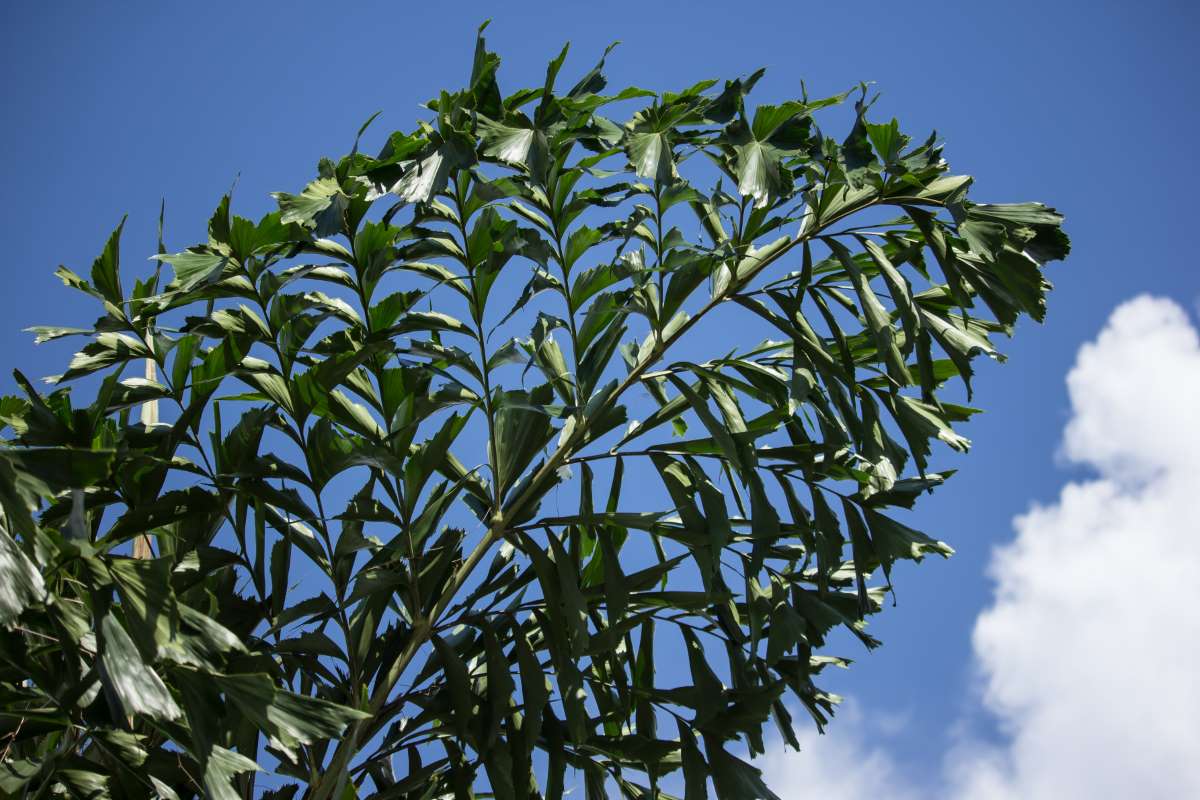Description
Caryota – Fishtail Palm –
There are about 12 species of large single and smaller multi stemmed, monoecious sometimes monocarpic palms, in this genus. They occur from India and Sri Lanka to Southeastern Asia, Northern Australia and the Solomon Islands from sea level to 7,000′ feet high in humid or monsoon climates. Huge bipinnate fronds each with a prominent sheathing base, are arranged in spirals on the upper part of each stem. ‘Fishtail’ refers to the shaped of the leaflets which are usually wedge or triangular shaped. The 3 petaled, cup shaped flowers are borne in large, pendent panicles just below the lowest leaf. Where not hardy grow as a specimen houseplant. In tropical regions fishtail palms are used as ornamental specimen trees, where they occur naturally they provide sago, palm wine and building materials.
Indoors, grow in soil based potting mix in bright filtered light and high humidity. Water freely during the growing season, applying a balanced liquid fertilizer monthly, water sparingly in winter.
Outdoors, grow in fertile, humus rich, moist but well drained soil with some midday shade.
Prone to spider mites, scale insects, fungal leaf spots, lethal yellowing, and false smut.
C. mitis – Clustered Fishtail Palm – Burmese Fishtail Palm – This small to medium sized palm from rainforest in Southeaster Asia grows 10-40′ feet tall with a 10-22′ feet wide crown and a 3-4″ diameter trunk. The trunk is at first clothed with fibrous leaf bases, later bare. The broadly linear, 2 pinnate, rich green leaves are 6-12′ feet long, with 6-60, fishtail, asymmetrical 3 angled leaflets. In summer it bears pendent panicles, 12″ or more long, of cream flowers, to 3/4″ across, and bears marble sized fruit ripen to dark red. Prefer moist soils.
Zones 10-12





